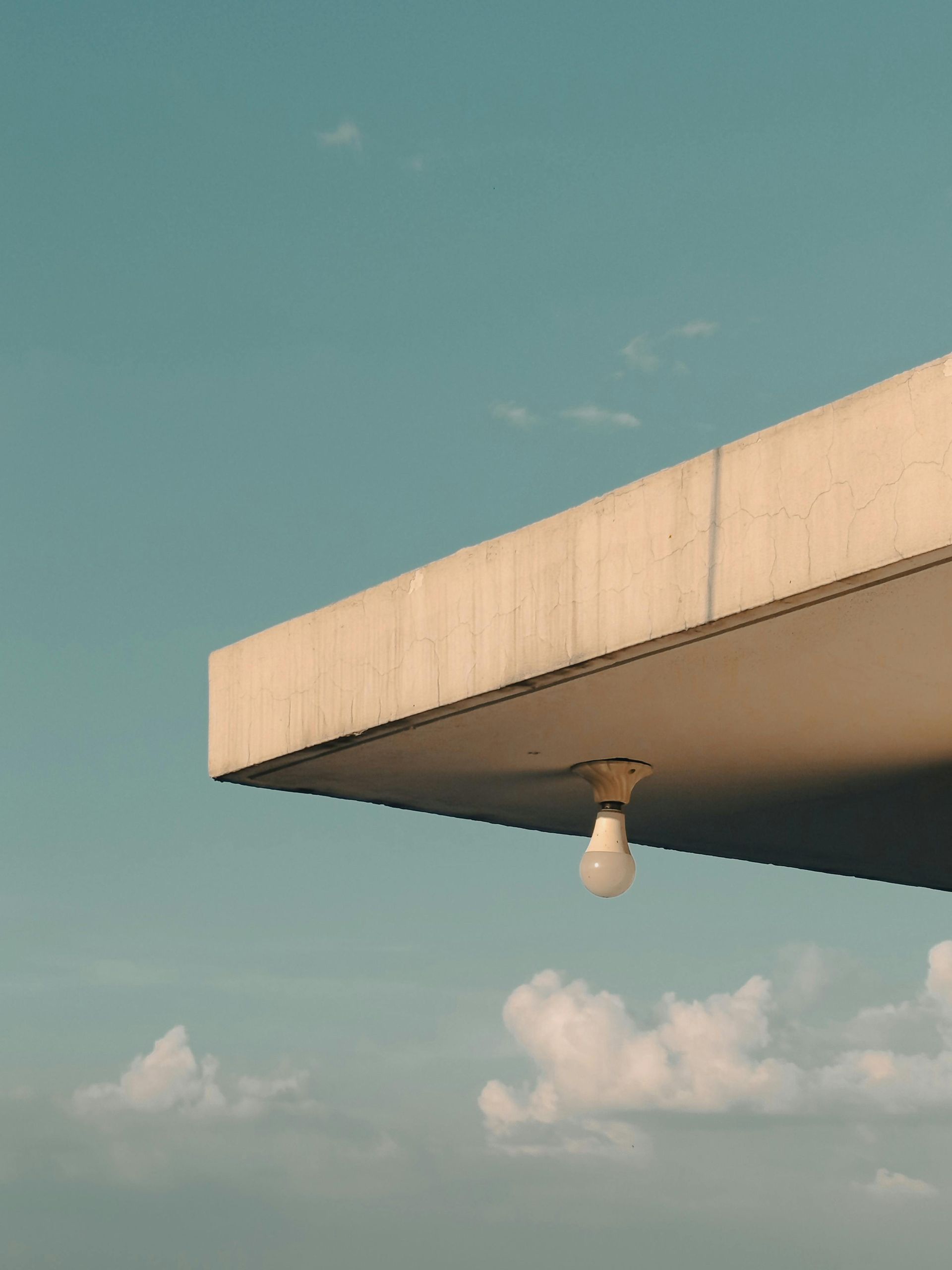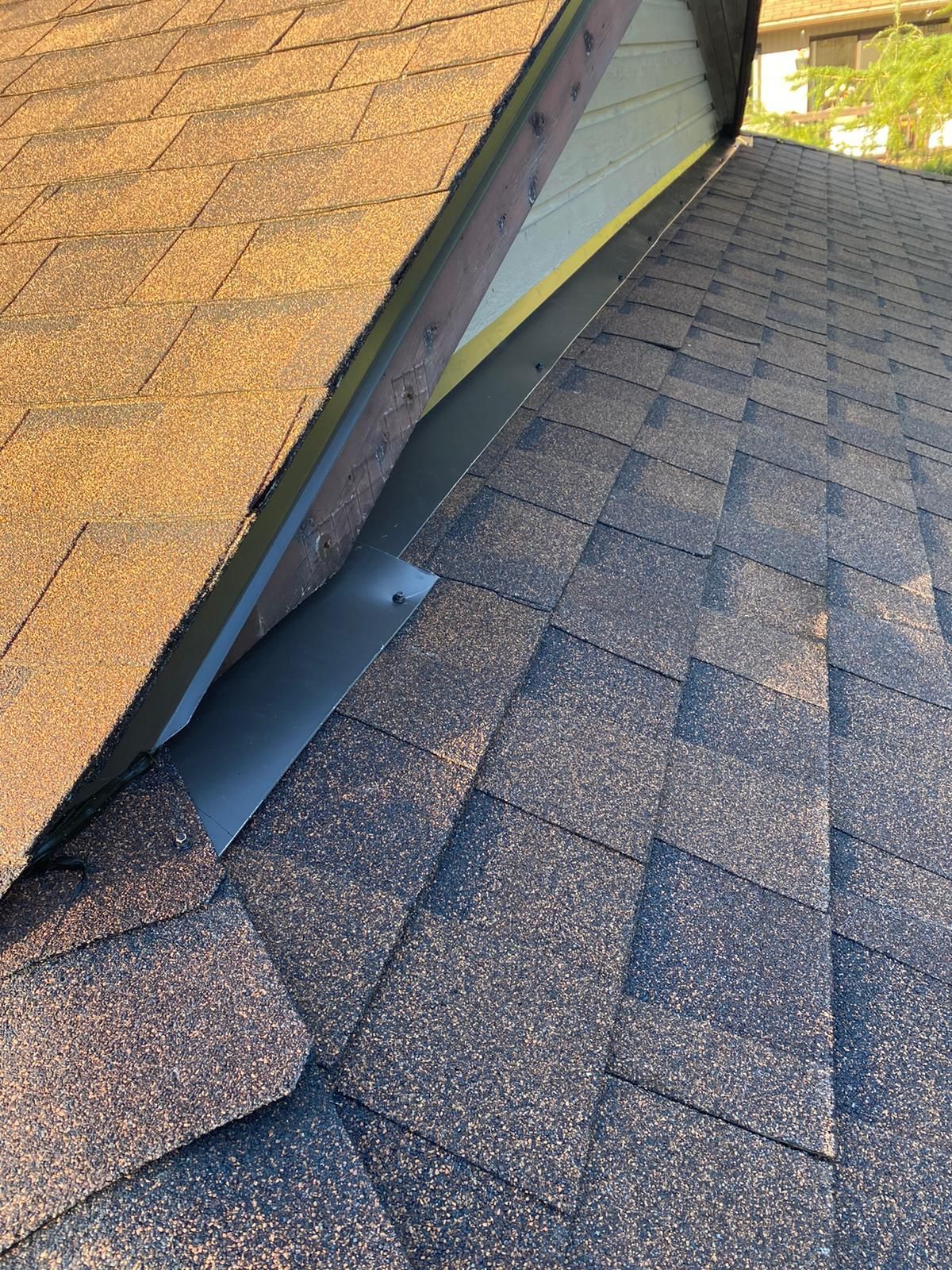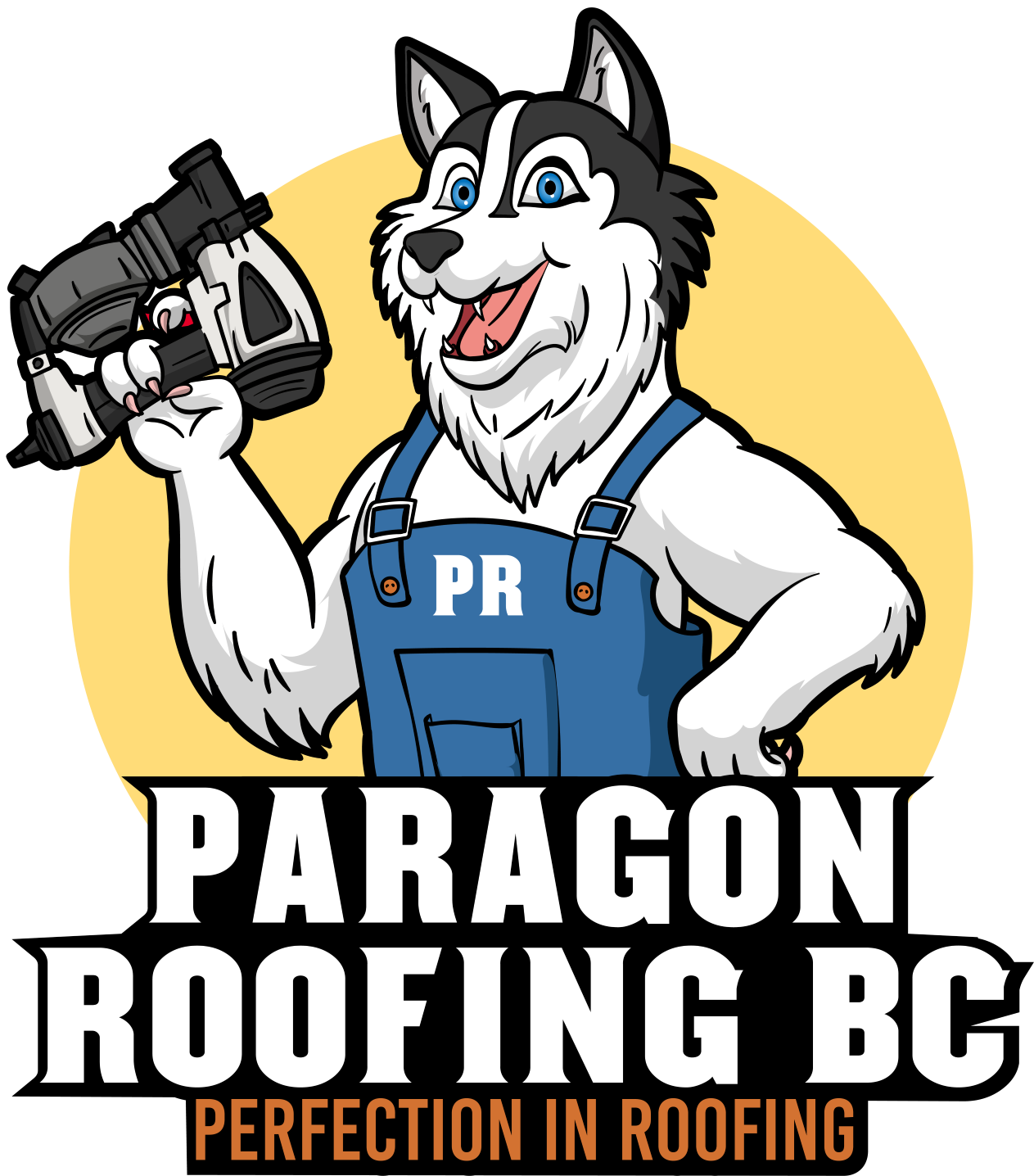
Commercial Roofing in Burnaby – Protect Your Business Investment
PARAGON ROOFING BC
Perfection In Roofing.
Building Roofs That Last.

What Is TPO Roofing?
TPO (Thermoplastic Polyolefin) is a modern single-ply roofing membrane used on flat and low-slope roofs. Think of it as a durable, flexible sheet of roofing that’s heat-welded together on the roof to form a continuous, watertight skin—ideal for Burnaby’s rainy, wind-driven climate.
How it’s built: A TPO sheet has a UV-resistant top layer, a tough polyester scrim in the middle for strength, and a bottom ply—factory-laminated into one membrane. Common thicknesses are 45, 60, and 80 mil, and colours are typically white (highly reflective), tan, or grey.
How it’s installed (single-ply tech):
- Laid over insulation/coverboard, then mechanically fastened or fully adhered to the deck
- Seams and flashings are hot-air welded (no seam glue), creating monolithic, watertight joints
- Details (drains, parapets, curbs) use pre-formed TPO accessories and welded laps for durability
Why it’s popular on flat roofs:
- Lightweight yet strong—great for retrofits and large commercial/strata roofs
- Heat-welded seams resist leaks in heavy rain and stand up to thermal movement
- Reflective options help cut peak summer roof temps and reduce heat gain
- Compatible with tapered insulation to eliminate ponding and improve drainage
Good to know: TPO is a high-performance system that depends on skilled welding, proper slope, and quality details around penetrations. Walkway pads are recommended where there’s regular foot traffic.
Considering TPO for your flat or low-slope roof in Burnaby? Call
Paragon Roofing BC for an expert TPO assessment and a clear, line-item proposal.
Reach Out Today!
Paragon Burnaby #1
We will get back to you as soon as possible.
Please try again later.
PARAGON ROOFING BC - PERFECTION IN ROOFING
Built for our rain, ready for our summers. TPO (Thermoplastic Polyolefin) shines on Burnaby flat and low-slope roofs because it tackles moisture and heat efficiently while keeping loads light.
Reflects heat (energy savings)
- High reflectivity: White and light-coloured TPO membranes bounce a significant portion of solar energy, helping keep rooftop temperatures down on bright days.
- Comfort + efficiency: Cooler roof surfaces can reduce peak indoor heat gain, trimming A/C run time during summer spells and shoulder-season warm-ups.
- Material longevity bonus: Lower surface temps reduce thermal stress on the membrane and accessories.
Welded seams for waterproofing
- Hot-air welded = monolithic: TPO seams are fused, not glued—creating a continuous, watertight skin that resists wind-driven rain common in Burnaby.
- Detail-friendly: Heat-welded corners, drains, and curb flashings form durable, uniform joints in all the places leaks love to start.
- Ponding resilience (with proper slope): Paired with tapered insulation and correctly located drains, welded seams help the system shrug off heavy downpours.
Lightweight and flexible
- Low structural load: TPO is a lightweight single-ply, which is helpful on retrofits and larger spans where added weight matters.
- Moves without cracking: The membrane’s flexibility accommodates thermal movement and building motion, reducing the risk of splits at transitions.
- Faster installs, less disruption: Fewer layers and hot-air welding make for efficient projects—often with less noise and shorter timelines.
Thinking about TPO for your flat or low-slope roof? Call
Paragon Roofing BC for a Burnaby-specific assessment, tapered-slope plan, and a clear, line-item proposal.

TPO Roofing Installation Process
A great TPO roof in Burnaby starts long before the membrane rolls out. Here’s how we build a watertight, code-compliant system that drains fast and stays tight through winter storms.
Proper substrate preparation
- Site & safety setup: Protect landscaping/tenants, set perimeter flags/rails, stage materials to keep work dry and clean.
- Tear-off & moisture check: Remove wet/failed layers; scan and probe the deck. Replace any soft OSB/plywood or spalled concrete.
- Perimeter blocking: Install treated wood blocking at edges/curbs to support metal terminations and ensure strong fastener bite.
- Vapour control (as needed): Add a vapour retarder over conditioned spaces with higher interior humidity (kitchens, showers, pools).
- Tapered insulation plan: Design crickets and slopes (typically 1/4” per foot / 2%) to direct water to drains/scuppers; avoid dead-level areas.
- Insulation & cover board: Mechanically fasten or adhere polyiso; top with a high-density cover board for impact resistance and smoother welding.
- Attachment choice: Select mechanically attached or fully adhered TPO based on wind zones, building height, and substrate—document fastener patterns.
Heat-welded seams (the watertight core)
- Layout & laps: Snap lines for straight sheets; set factory edges with minimum 3–4″ laps (per manufacturer).
- Hot-air welding: Use calibrated welders (auto and hand) set to membrane thickness and ambient conditions; keep travel speed consistent.
- Probe & test: Seam-probe 100% of welds; perform daily peel/field weld tests and log temperatures/speeds in the QC report.
- T-joints & end laps: Add T-joint patches where three sheets meet; round corners to prevent peel-starts.
- Details done right:
- Inside/outside corners: Pre-molded or hand-fabbed corners fully welded.
- Penetrations/curbs: Prefab boots or curb flashings with reinforced corners and continuous welds.
- Walk pads: Welded at service routes to protect the membrane.
- Final finish: Cold-weld prep and edge sealant at cut edges where the spec requires.
Drainage integration (no ponding, no surprises)
- Drains: Set new or refurbished cast drains with clamping rings; recess bowls flush with the membrane plane. Install stainless strainers.
- Scuppers & overflows: Through-wall scuppers and secondary (overflow) scuppers sized to code; soldered/formed metals tied into TPO with reinforced target patches.
- Gutters & edge metal: ES-1 compliant edge metal with TPO-to-metal strips (or coated metals) for a continuous seal; positive slope to outlets.
- Crickets & saddles: Tapered polyiso crickets behind HVAC curbs, skylights, and at wide parapet runs to kill ponding.
- Downspout coordination: Verify discharge paths and splash blocks so water leaves the building safely.
Result: a smooth, welded, positive-slope TPO system that sheds Burnaby’s heavy rain and stands up to coastal winds—backed by clear QC documentation and manufacturer warranty eligibility.
Ready for a clean, by-the-book TPO install? Call Paragon Roofing BC for a Burnaby-specific assessment, tapered-slope design, and a precise, line-item proposal.

TPO vs Torch-On vs EPDM in Burnaby
Choosing the right flat-roof system in Burnaby comes down to rain performance, detailing, and total cost of ownership—not just the sticker price. Here’s a clear, no-nonsense comparison for our climate.
The quick take
- TPO: White, heat-welded single-ply. Great reflectivity and clean seams when installed by a seasoned crew.
- Torch-On (SBS): Two-ply modified bitumen with a mineral cap. Time-tested in coastal rain and forgiving at complex details.
- EPDM: Black synthetic rubber. Excellent UV durability and flexibility; shines on simple, open roofs.
Cost (typical Burnaby residential ranges, all-in)
- TPO: usually $9–$14/ft², depending on thickness, attachment method (mechanical vs fully adhered), tapering, and edge metal.
- Torch-On (SBS): usually $8–$13/ft² for a quality 2-ply system; add cost for tear-off, safety watch, and tapered insulation.
- EPDM: usually $8–$12/ft², with savings on larger, low-complexity roofs; add for walkway pads and detail kits.
(Pricing varies with access, height, decking repairs, curb/skylight count, and whether tapered insulation is required.)
Lifespan in Burnaby’s climate (realistic)
- TPO: 20–30 years with good installation, welded details, and regular maintenance.
- Torch-On (SBS): 20–25+ years for a 2-ply; longer when kept clean and dry around drains and perimeters.
- EPDM: 25–30 years on simple, low-traffic roofs; longevity depends on protection at seams and penetrations.
Performance in heavy rain & wind
- TPO
- Seams: hot-air welded—fast, watertight when QC’d (probe tests + daily peel tests).
- Pros: bright, reflective surface reduces heat gain; light weight; excellent for large, open fields.
- Watch-outs: weld quality is everything; plan walk pads for service paths; choose brand/sheet thickness appropriate for foot traffic and wind zones.
- Torch-On (SBS)
- Seams: fused with flame or torch-grade adhesives; redundancy from 2-ply build.
- Pros: Proven track record in coastal BC; excels around complex details (parapets, curbs, tight corners); puncture-resistant cap sheet.
- Watch-outs: requires trained crews and strict fire-safety protocols; ensure proper slope and well-detailed drains to avoid ponding.
- EPDM
- Seams: factory tape/primer systems; modern tapes are robust when installed cleanly.
- Pros: highly flexible in cold; excellent UV resistance; fewer field seams on big, simple roofs.
- Watch-outs: black membrane can run warmer in summer; susceptible to punctures without walk pads; detailing around complex penetrations needs experienced hands.
Best-fit scenarios
- Pick TPO when you want a cool, reflective roof, have wide open fields, and value fast, clean heat-welded seams with manufacturer-eligible warranties.
- Pick Torch-On (SBS) for complex layouts, parapet walls, lots of penetrations, or when you want a belt-and-suspenders 2-ply system that’s very forgiving in coastal rain.
- Pick EPDM for simple, low-traffic flats with few penetrations where its long UV life and flexibility shine.
Total cost of ownership (what really adds up)
- Slope & drainage: The biggest driver of longevity for all three. Tapered insulation, correctly set drains/overflows, and ES-1 edge metal are non-negotiable.
- Details & QC: Weld/torch/tape quality at seams and penetrations decides whether your roof reaches its lifespan.
- Foot traffic: Walk pads protect every system—budget for them where techs will travel.
- Maintenance: Annual inspections and quick patching keep small issues from becoming saturated insulation and structural repairs.
Not sure which system fits your roof, budget, and building use? We’ll inspect, run drainage/slope calcs, and price
TPO vs Torch-On vs EPDM side-by-side so you can choose with confidence.
Call Paragon Roofing BC for a Burnaby-specific recommendation and a clean, line-item proposal.
Built for Burnaby. Tuned for business. Guaranteed for the long haul. Here’s why local property managers and owners trust us when they want a clean, efficient, watertight TPO system that can handle coastal rain and day-to-day foot traffic.
- Commercial expertise you can feel on site
We plan around tenants, loading docks, and live operations. Our teams stage safely, protect access points, and keep schedules crisp—even on occupied retail, warehouses, and multi-storey strata. Expect proper slope packages to drains/overflows, ES-1 edge metal, code-compliant guardrails/tie-offs, and tidy penetrations for HVAC and conduits. We build to RCABC best practices and Burnaby/VBBL requirements so your roof passes with zero drama. - Energy-focused installs that cut heat and moisture—not corners
TPO is a white, reflective membrane; we lean into that advantage. We’ll right-size membrane thickness, add tapered insulation where needed, and seal the air layer at curbs and edges to reduce heat loss and condensation risk. Weld quality is instrument-checked (probe tested, daily test welds, logs saved), and we spec walk pads along service routes to protect performance for the life of the roof. - Long-term warranty coverage that actually sticks
As manufacturer-recognized installers, we qualify your project for robust NDL (No Dollar Limit) warranties—often 20–30 years when the assembly is designed accordingly. We handle the paperwork, inspections, and photo documentation, then hand you a clean close-out package: as-builts, weld logs, product data, and the registered warranty certificate. Pair that with our maintenance program and you’ve got predictable costs for the long term.
Ready for a no-pressure roof review and clear line-item proposal? Call
Paragon Roofing BC for expert
TPO roof replacement in Burnaby—we’ll walk the roof, map drainage, and price options so you can choose with confidence.

Frequently Asked Questions.
Roofing is an investment into your property. Here are some FAQs to help navigate making that choice.
Do you install and repair skylights, sun tunnels, gutters, soffits, downpipes, ventilation, or chimneys?
YES! At Paragon Roofing BC, we offer all roofing repairs and installs for skylights, sun tunnels, and various roof windows. We install and repair downspouts, gutters, soffits, scuppers, and more because proper drainage is key for a healthy roofing system. Roof penetrations – also known as protrusions - such as chimneys or vents are included in our roofing repair and install services.
Does your roofing company have proper liability insurance and Work Safe BC coverage?
Yes, we maintain current liability insurance and WorkSafeBC coverage because safety isn’t an option, it’s the only way to do business. Our clients and company employees are covered if there be an accident, accidental damage or unforeseen issues on the job site.
How long will it take to reroof my house or building?
All of our reroofing services will require a different timeline, varying on the size of your roof, weather conditions, and the scope of the project. What we can guarantee is your comfort throughout the roof install service and our transparent communication.
Why are vents so important for my roof?
Vent installation is very important for any roof. It provides moisture control so condensation and water don’t cause wood rot, mold, or damage to the attic and roofs insulation. Ventilation allows for consistent temperatures in your attic, prevent ice dams, and improve the lifespan of your roof and shingles. Installing ventilation is a must have to uphold the manufacturers warranty.
How should I prepare for the installation of my new roof?
During our roof installs, hammering can cause vibrations and shake loose items off shelves and walls so, we recommend removing loose valuables until we’re done. We kindly ask that you clear your driveway and a parameter around your home to make room for new materials and the dumpster. To best reduce the risk of damage from falling debris during the roof tear off, please move anything you don’t want accidentally damaged.
If my roof leaks, do I have to completely replace it?
Small roof leaks will be a simple fix, while pest, bird, and critter damage causing a leaky roof could require a more extensive leak repair service. Simply put, no, just because you have a roof leak, doesn’t mean it needs to be fully replaced.
Moss is growing on my roof, is that an issue?
Burnaby’s close proximity to the ocean causes it to be a moist area where moss, algae, and vegetation will grow on rooftops. If left unmaintained it will develop into a big problem and an even bigger headache. Moss will divert water effectively ruining the optimal water flow designed within the roof system. Discolouration, moisture build-up, lifting and separated shingles are common long-term side effects of moss growth on your roof.
Here's What Our Existing Clients Think.
Home and business owners we've served across the greater Vancouver area.
Our Google Reviews
Edit Google Reviews Widget
We look forward to helping you.
For all your roofing needs, give us a call, text, or email. 604-358-3436
Paragon Burnaby #2
We will get back to you as soon as possible.
Please try again later.
Learn More About Roofing in Burnaby
- How coastal winds impact Burnaby roofs—and how to protect yours
- Why roof ventilation matters in Burnaby’s wet weather
- How to prepare your Burnaby roof for winter storms and hail
- Top durable roofing options for older homes in Burnaby
- How often should you inspect your roof in Burnaby?
- Asphalt shingles vs. metal roofing in Burnaby: What to know
- Best roofing materials for Burnaby homes: Asphalt, metal, or tile?
- How rain and snow affect Burnaby roofs all year long





